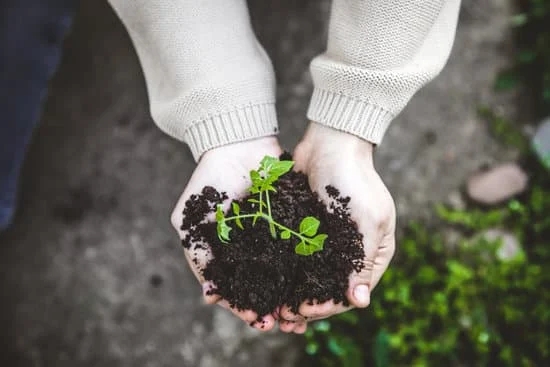Landscaping and gardening ideas are essential components of creating a beautiful and functional outdoor space. Whether you are looking to enhance your backyard, front yard, or even a small urban garden, the right design elements can make a significant impact. From choosing the perfect plants for your climate to implementing sustainable practices, there are endless possibilities to transform your landscape.
Planning your dream garden involves careful consideration of the layout, functionality, and aesthetic appeal of your outdoor space. By incorporating tips and tricks for effective design, you can create a harmonious environment that reflects your personality and style. With the right plants selected based on your climate and soil type, you can ensure successful growth and maintenance of your garden throughout the year.
Incorporating DIY landscaping projects not only adds a personal touch to your outdoor space but also provides budget-friendly options for enhancing its overall look. Whether it’s creating a cozy seating area, installing unique planters, or adding decorative accents, these creative ideas can elevate the beauty of your yard without breaking the bank.
Stay inspired with the latest trends in outdoor design and explore innovative ways to implement eco-friendly techniques in your landscape for a sustainable and thriving garden.
Planning Your Dream Garden
When it comes to designing your dream garden, there are several key tips and tricks that can help you create a space that is not only functional but also beautiful. One important consideration is to start by defining the purpose of your garden.
Are you looking to create a peaceful oasis for relaxation, a vibrant space for entertaining, or a productive area for growing your own fruits and vegetables? By identifying your garden’s primary function, you can better plan the layout and features that will best suit your needs.
Another essential aspect of planning your dream garden is considering the size and shape of the outdoor space you have available. Whether you have a large backyard or a small urban patio, there are design strategies that can help you make the most of your area.
For smaller spaces, vertical gardening techniques such as trellises or hanging planters can maximize planting opportunities without taking up valuable ground space. On the other hand, larger yards can benefit from designated zones for dining, lounging, and gardening to create a cohesive and inviting atmosphere.
In addition to functionality and layout, aesthetics play a significant role in designing a beautiful outdoor space. When selecting plants for your garden, consider factors such as color scheme, texture variation, and seasonal interest to create visual appeal throughout the year. Mixing different plant heights and shapes can add depth and dimension to your landscaping design.
Incorporating elements like pathways, water features, and decorative structures can also enhance the overall look of your garden while providing practical benefits. By combining these tips and tricks with personalized touches that reflect your style preferences, you can transform your outdoor space into a tranquil retreat or social hub that suits your lifestyle.
| Key Tips | Benefits |
|---|---|
| Define the purpose of your garden | Helps in planning layout & features |
| Consider size & shape of outdoor space | Optimizes planting opportunities |
| Select plants based on color scheme & texture | Creates visual appeal throughout the year |
Planting for Success
When it comes to creating a successful garden, choosing the right plants for your climate and soil type is crucial. Every region has its own unique characteristics that can impact the growth and health of your plants. By selecting varieties that are well-suited to your specific conditions, you can ensure a thriving garden that will flourish year after year.
Understanding Your Climate
Before selecting plants for your garden, it’s important to assess the climate of your region. Determine whether you live in a hot and dry desert climate, a cool and humid coastal climate, or something in between. Researching the average temperatures, precipitation levels, and potential weather extremes will help you narrow down which plants are best suited for your area. Many local nurseries or extension services can provide guidance on which plants thrive in your specific climate.
Considering Soil Type
In addition to climate, understanding your soil type is essential when choosing plants for your garden. Whether you have sandy, clay-based, loamy, or rocky soil will dictate which plants will do well in your garden beds. Conduct a simple soil test to determine the pH level and nutrient content of your soil.
This information will help you select plants that are adapted to those specific conditions. Amending soil with organic matter can also improve its quality and provide a better environment for plant roots to grow and thrive.
Choosing the Right Plants
Once you have a good understanding of your climate and soil type, it’s time to choose the right plants for your garden. Look for native or adapted species that are well-suited to the conditions in your area. Consider factors like water requirements, sun exposure preferences, and mature size when making selections.
Mixing different types of plants – such as trees, shrubs, perennials, and annuals – can create a diverse and visually appealing landscape. Remember to group together plants with similar needs to make maintenance easier and promote their overall health and success. By carefully selecting plants that are tailored to your climate and soil type, you’ll set yourself up for gardening success while creating a beautiful outdoor space that thrives throughout the seasons.
DIY Landscaping Projects
Embarking on DIY landscaping projects can be a fulfilling and budget-friendly way to transform your outdoor space. Whether you are looking to enhance your garden, patio, or backyard, there are endless possibilities to unleash your creativity and personalize your landscape. From simple upgrades to more complex installations, taking matters into your own hands can add a personal touch to your yard.
Upcycled Garden Décor
One creative and eco-friendly way to enhance your yard is by incorporating upcycled items as garden décor. From old tires turned into planters to repurposed pallets transformed into vertical gardens, upcycling not only adds character to your outdoor space but also helps reduce waste. Consider using items like mason jars as lanterns, broken terracotta pots for fairy gardens, or even an old ladder as a vertical herb garden. The possibilities are endless when it comes to upcycling in landscaping.
DIY Pathways and Walkways
Creating pathways and walkways in your yard doesn’t have to break the bank. With materials like gravel, stones, mulch, or even recycled concrete pieces, you can design pathways that guide visitors through your garden while adding visual interest.
Consider laying down stepping stones surrounded by lush grass or planting groundcover plants like creeping thyme between pathways for a whimsical look. By incorporating DIY pathways and walkways into your landscaping project, you can define spaces and create flow in your outdoor area.
Vertical Gardens and Trellises
For those with limited space, vertical gardens and trellises offer a practical solution for maximizing greenery in small areas. Create a living wall with modular planters or hang potted plants from structures like trellises or arbors to add height and dimension to your garden.
Vertical gardening allows you to grow a variety of plants vertically rather than horizontally – perfect for balconies, patios, or narrow yards. Consider growing climbing plants like ivy or jasmine on trellises for added privacy or planting herbs in vertical stackable planters for easy access while cooking.
Maximizing Space
Creating a beautiful garden in a small urban space can be a challenging yet rewarding endeavor. With the right planning and design, even the tiniest of outdoor areas can be transformed into a lush and inviting oasis.
One of the key principles to maximizing space in a small garden is to utilize vertical gardening techniques. By incorporating wall-mounted planters, hanging baskets, and trellises, you can make the most out of limited ground space while adding visual interest to your garden.
In addition to vertical gardening, choosing the right plants is essential when designing a small garden in an urban environment. Opt for compact varieties that won’t overwhelm the space and consider plants that serve multiple purposes, such as herbs that can be used for cooking or flowers that attract pollinators. Grouping plants with similar water and sunlight needs together can also help streamline maintenance and ensure that each plant thrives in its designated spot.
Another great way to maximize space in a small urban garden is by creating different zones or areas within the space. This could include a cozy seating area, a vegetable garden patch, or even a mini greenhouse for cultivating herbs or starting seedlings.
By creating designated areas for specific purposes, you can make the most out of every inch of your outdoor space and create an organized and functional garden that meets your needs and preferences. By implementing these landscaping and gardening ideas tailored specifically for small urban environments, you can transform your compact outdoor space into a green sanctuary that enhances your living environment.
Sustainable Gardening Practices
In today’s world, the importance of sustainable gardening practices cannot be overstated. As we become more aware of our impact on the environment, implementing eco-friendly techniques in landscaping and gardening is crucial.
One way to do this is by utilizing organic fertilizers and pesticides, which are free from harmful chemicals that can leach into the soil and water supply. Composting leftover plant materials and kitchen scraps is another great way to reduce waste while providing nutrient-rich soil for your garden.
Water conservation is another key aspect of sustainable gardening. Installing a drip irrigation system can help minimize water usage by delivering moisture directly to the roots of plants. Collecting rainwater in barrels for later use during dry spells is also a sustainable practice that can benefit both your garden and the environment. Additionally, choosing drought-resistant plants native to your region can help reduce the need for excessive watering.
Furthermore, creating a habitat for beneficial insects and wildlife in your landscape can enhance biodiversity and promote a healthy ecosystem. Planting native flowers that attract pollinators like bees and butterflies not only adds beauty to your garden but also contributes to essential ecological processes. By incorporating these sustainable gardening practices into your landscaping and gardening ideas, you can create a thriving outdoor space that is both environmentally friendly and visually stunning.
| Aspect | Importance |
|---|---|
| Organic Fertilizers | Reduce harmful chemicals in soil |
| Water Conservation | Minimize water usage with drip irrigation |
| Biodiversity | Create habitat for beneficial insects and wildlife |
Seasonal Maintenance
As a garden enthusiast, maintaining the health and vitality of your outdoor space throughout the changing seasons is crucial. With the right seasonal maintenance practices, you can ensure that your garden remains thriving year-round. Here are some useful tips to help you keep your garden in top shape no matter the time of year:
- Spring: This season is a time for rejuvenation and growth in the garden. Take the opportunity to clean up any debris that may have accumulated over winter, prune back plants as needed, and start preparing your soil for planting new flowers or vegetables.
- Summer: With the heat of summer upon us, it’s important to stay on top of watering needs. Be sure to water deeply but infrequently to encourage deep root growth. Regularly deadhead flowers and trim back any overgrown branches to promote healthy growth.
- Fall: As temperatures begin to cool down, prepare your garden for the winter months ahead. Remove any dead or dying plants, mulch around trees and shrubs to protect their roots during colder weather, and plant fall bulbs for early spring blooms.
By following these seasonal maintenance tips, you can keep your garden looking its best no matter what time of year it is. Remember that each season brings its own set of tasks and challenges, but with proper care and attention, your outdoor space will continue to thrive and bring you joy throughout the year.
Landscaping Trends
One current trend gaining popularity is the use of native plants in landscaping designs. Native plants are well-suited to local climate conditions, require less maintenance, and support local wildlife populations.
Incorporating native plants into your garden not only enhances the natural beauty of your landscape but also contributes to biodiversity conservation efforts. Consider consulting with local nurseries or botanical gardens to learn more about the native plant species that thrive in your area and how to incorporate them into your landscaping design.
In addition to using native plants, incorporating sustainable landscaping practices into your outdoor space can have a positive impact on the environment. Rain gardens, permeable paving materials, composting systems, and water-efficient irrigation techniques are just a few examples of sustainable gardening practices that can help reduce water consumption, minimize waste production, and create a healthier ecosystem in your yard.
By implementing eco-friendly techniques in your landscaping design, you can enjoy a beautiful outdoor space while minimizing your carbon footprint and contributing to a more sustainable future.
Garden Lighting
When it comes to creating a magical ambiance in your outdoor space, garden lighting plays a crucial role. Proper illumination not only enhances the beauty of your landscaping and gardening ideas but also provides functionality and safety during the evening hours. Whether you want to highlight specific features in your garden or simply enjoy the space after sunset, choosing the right lighting can make all the difference.
Here are some tips and ideas for garden lighting that will help you create a captivating outdoor atmosphere:
- Consider using solar-powered lights to save energy and reduce your carbon footprint.
- String lights are a versatile option that can be easily draped over trees, fences, or pergolas to add a cozy feel to your garden.
- Path lights not only illuminate walkways but also enhance the overall aesthetic of your outdoor space.
- Up-lighting can be used to accentuate trees, sculptures, or any other focal points in your garden.
By strategically placing different types of lighting fixtures throughout your garden, you can create depth, texture, and visual interest. Experiment with different placements and angles to find the perfect balance between practicality and aesthetics. Whether you prefer a soft, romantic glow or a more dramatic effect, the key is to create a harmonious blend of light and shadow that transforms your outdoor space into a magical oasis.
The Right Illumination
Choosing the right type of lighting for your garden is essential to set the mood and achieve the desired ambiance. Here are some popular options to consider:
- LED lights are energy-efficient and come in various colors and styles to suit different preferences.
- Floodlights are great for highlighting larger areas or architectural features in your landscape.
- Spotlights can be used to draw attention to specific plants or objects in your garden.
- Hanging lanterns or pendant lights add an elegant touch to outdoor dining areas or seating areas.
Additionally, incorporating smart lighting technology allows you to control brightness levels, colors, and schedules remotely using your smartphone or voice commands. This innovative approach not only enhances convenience but also enables you to customize your garden lighting according to different occasions and moods. Experiment with different combinations of lighting fixtures and techniques until you find the perfect balance that reflects your personal style and enhances the overall appeal of your outdoor space.
Conclusion
In conclusion, landscaping and gardening ideas offer a wonderful opportunity to transform your outdoor space into a beautiful and functional oasis. By exploring the impact of outdoor design, planning your dream garden with expert tips, selecting the right plants for your climate, and engaging in DIY landscaping projects, you can create a personalized sanctuary right at your doorstep.
One of the key takeaways from this exploration is the importance of sustainability in gardening practices. Implementing eco-friendly techniques not only benefits the environment but also contributes to the overall health and resilience of your garden. Whether it’s composting, water conservation methods, or choosing native plants, there are numerous ways to make your landscaping efforts environmentally friendly.
As trends in landscaping continue to evolve, it’s essential to stay inspired and keep up-to-date with the latest ideas and designs in outdoor spaces. From maximizing space in urban environments to creating magical ambiance with garden lighting, there are endless possibilities to explore. By incorporating these landscaping and gardening ideas into your own home, you can truly elevate your outdoor living experience and enjoy the beauty of nature right outside your door.
Frequently Asked Questions
What Is the Most Low Maintenance Landscaping?
The most low maintenance landscaping typically involves using native plants that are well-suited to your climate and soil conditions. These plants require minimal watering, fertilizing, and pruning, which can save both time and money in the long run.
How Do I Landscape My Backyard on a Budget?
Landscaping your backyard on a budget can be achieved through several cost-effective strategies. One option is to start small and focus on one area at a time, gradually expanding as your budget allows.
Additionally, using mulch to cover bare soil, opting for perennial plants instead of annuals, and reusing materials such as stones or wood from other projects can help cut costs.
How Do I Design My Backyard Layout?
When designing your backyard layout, it’s essential to consider both functional and aesthetic aspects. Start by identifying how you plan to use the space – whether for entertaining, gardening, or relaxation.
Then, create distinct zones for each activity while ensuring there is a natural flow between them. Pay attention to factors like sunlight exposure, privacy needs, and any existing features that you want to incorporate into the design.

Welcome to my gardening blog! I am passionate about plants and enjoy sharing my knowledge and experiences with others. In this blog, I will write about everything related to gardening, from tips on how to get started to updates on my own garden projects.





